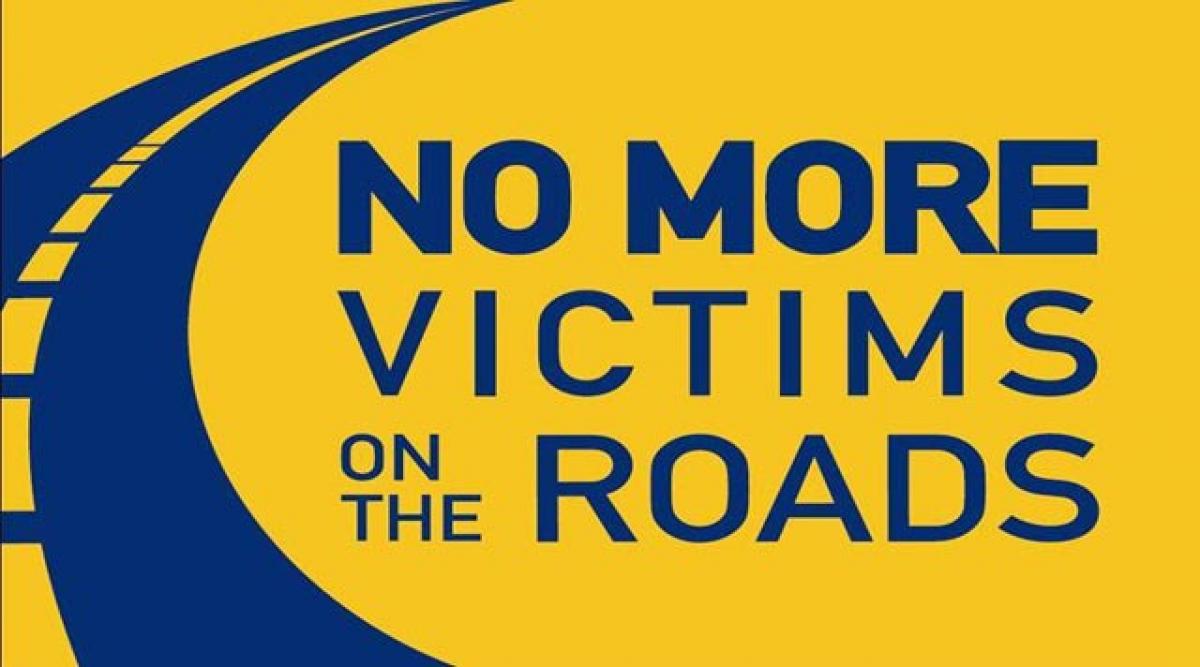Live
- One dead after car hits lorry at Muthangi Outer Ring Road in Sangareddy
- WhatsApp Update: WhatsApp Introduces Passkeys for iOS, Secure Logins Without Passwords
- Writ in HC seeking disqualification of BRS MLAs Venkata Rao Tellam, Kadiyam Srihari
- PM Modi Criticizes Congress Over Muslim Inclusion In Karnataka's OBC List
- Danam’s family owns total assets worth about Rs 58 cr
- Ice Cream Vendor Stabbed Near India Gate
- DCA seizes medicines with misleading advertisements
- Naveen unveils BJD roadmap to make Odisha No.1 State
- Social media posts influence over 50% youngsters in city
- KCR is mentally imbalanced
Just In

Hosted by the Government of Brazil on 18-19 November 2015 in Brasilia, Brazil, and co-sponsored by WHO, the 2nd Global High-Level Conference on Road Safety represented a historic opportunity to chart progress at the mid-point of the Decade of Action for Road Safety 2011-2020.
Hosted by the Government of Brazil on 18-19 November 2015 in Brasilia, Brazil, and co-sponsored by WHO, the 2nd Global High-Level Conference on Road Safety represented a historic opportunity to chart progress at the mid-point of the Decade of Action for Road Safety 2011-2020.
At the close of the Conference, the 2200 delegates adopted the “Brasilia Declaration on Road Safety” through which they agreed ways to halve road traffic deaths by the end of this decade a key milestone within the new Sustainable Development Goal (SDG) target 3.6.
Developed through an intergovernmental process involving consultation with other stakeholders, the Brasilia Declaration is a call to rethink transport policies in order to favour more sustainable modes of transport such as walking, cycling and using public transport.
It highlights strategies to ensure the safety of all road users, particularly by improving laws and enforcement; making roads safer through infrastructural modifications; ensuring that vehicles are equipped with life-saving technologies; and enhancing emergency trauma care systems.
The Brasilia Declaration encourages WHO and partners to facilitate the development of targets to reduce road traffic crashes and fatalities, and support the definition and use of indicators linked to the SDG targets related to road safety.
The World Health Organization's (WHO) global status report on road safety published this year states that 1.25 million people die due to road accident every year, making it a global health hazard. It is also the leading cause of death among people aged between 15 and 29.
Citing its importance for traffic safety, the declaration promotes sustainable commuting ways and prioritises pedestrians, cyclists and motorists. It recommends “implementation and enforcement of policies and measures to protect and promote, in an active way, pedestrian safety and cyclists’ mobility, such as sidewalks, bike paths and bike lanes, proper lighting, radars with cameras, signalling and road marking”.
Only seven per cent of the world’s population is protected by appropriate traffic laws, which provide for mandatory use of helmets, seat belts and protective devices for children in vehicles, prohibition of driving under the influence of alcohol, speed control and laws forbidding the use of mobile phones while driving, including sending text messages.
The declaration further urges states to adapt road safety policies for the benefit of the vulnerable road users, children, youth, older persons and persons with disabilities.

© 2024 Hyderabad Media House Limited/The Hans India. All rights reserved. Powered by hocalwire.com







